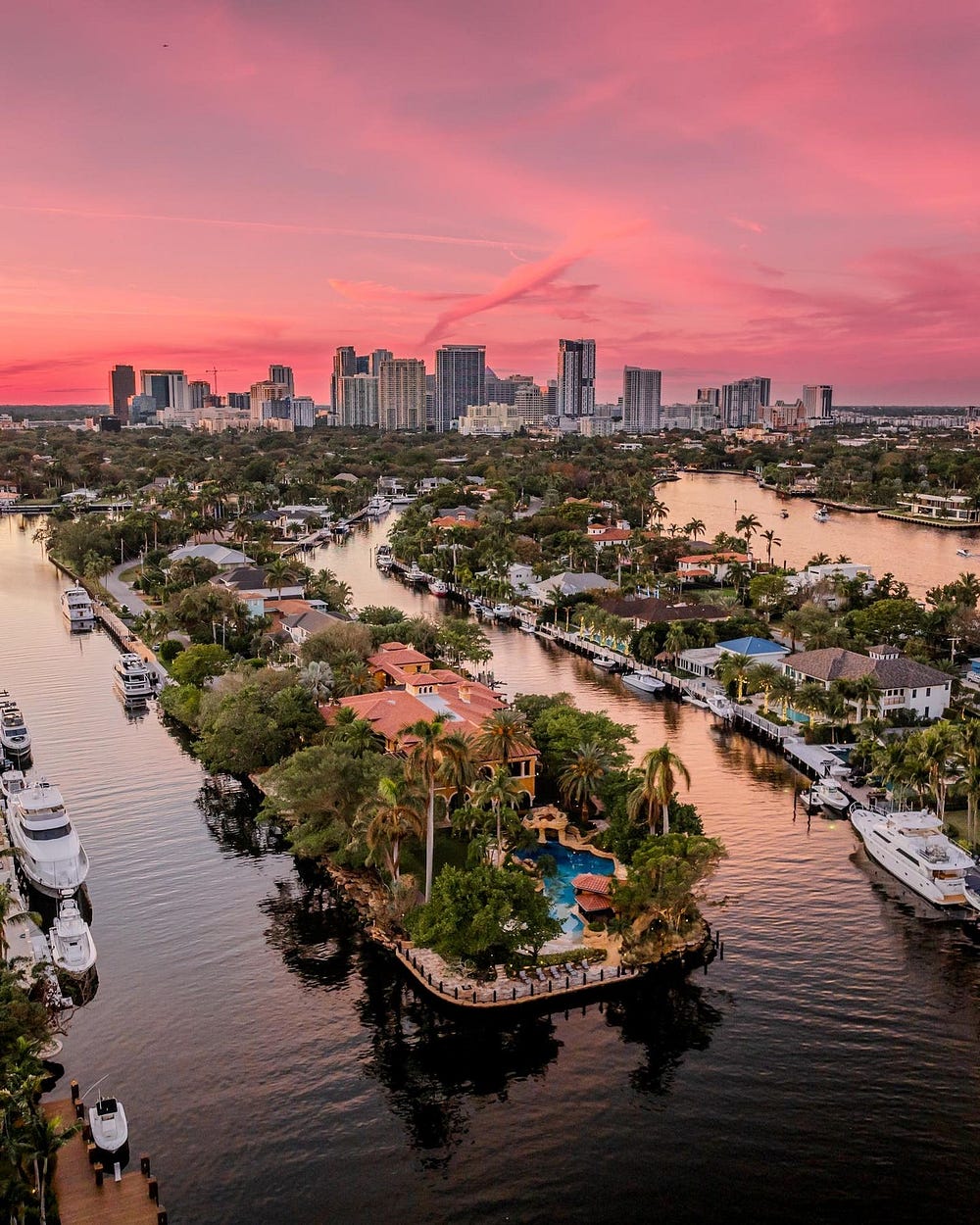For years, Fort Lauderdale lived in the shadow of Miami’s glamour and Palm Beach’s old money. Known best for its spring break chaos and nautical charm, it was easy to overlook. But that era is over. A quiet revolution is reshaping this coastal city — one not led by noise, but by vision, capital, and something deeper: intentional reinvention.
The beachfront is glittering. The capital is flowing. And in its most unexpected corners, Fort Lauderdale is awakening.

FAT Village: The Soul of a New City
If you really want to understand what’s happening in Fort Lauderdale, look away from the ocean for a moment and turn inland — toward FAT Village. The once-forgotten warehouse zone — short for Flagler Arts and Technology — has become the unlikely epicenter of Fort Lauderdale’s creative and economic transformation.
What began as a haven for local artists and graffiti-covered studios is now seeing a new kind of interest. Developers are acquiring blocks. Architecture firms are drawing up blueprints. And a new vision is emerging: sleek residences, creative workspaces, and high-design hotels set against the bones of industrial grit.
It feels familiar — echoes of Brooklyn, Wynwood, and the Meatpacking District — but FAT Village still belongs to Fort Lauderdale. It’s raw, refined, and strangely serene. A new identity is being etched in steel and concrete, but also in canvas and collaboration. Here, culture isn’t collateral damage — it’s currency.
Viceroy and St. Regis: Where the Waterfront Gets Royal Treatment
Meanwhile, along Fort Lauderdale Beach, the symbols of its luxury ascent are rising fast — and none are more emblematic than The Viceroy Residences and The St. Regis Residences.
The Viceroy, nestled in the North Beach Village area, brings a refined elegance to the shoreline: clean lines, oceanfront lounges, and residences designed to blend California cool with Floridian opulence. It caters to the global traveler who wants discretion, design, and a seamless blend of hotel-style living with residential privacy.
Further south, the St. Regis Residences Fort Lauderdale are rewriting the rules of beachfront prestige. With ultra-luxury condos, private butler service, and panoramic views that dissolve the boundary between sea and sky, it represents the next echelon of resort-style permanence. These aren’t vacation homes — they’re sanctuaries.
The buyers? CEOs, crypto millionaires, art collectors — the kind of people who prefer to invest where others haven’t yet looked.
A Financial Frontier Disguised as a Beach Town
But Fort Lauderdale’s evolution isn’t just about the skyline — it’s about who’s coming. Wealth management firms, fintech companies, and family offices are moving in, choosing Fort Lauderdale over Miami for its strategic calm and lower profile. Some are converting old buildings downtown into sleek new headquarters. Others are eyeing FAT Village as the next creative-finance crossover.
The city is rapidly becoming one of Florida’s most interesting business destinations — not because it’s loud, but because it’s quiet. Not because it’s obvious, but because it isn’t. The money here isn’t chasing hype. It’s making bets.

A Dual Identity, Perfectly Balanced
Fort Lauderdale is doing something rare: becoming elite without losing its soul. On one hand, it’s a playground for wealth — yachts, private air terminals, Michelin-minded restaurants. On the other, it’s still anchored by creative energy, canals, and a certain breezy, barefoot magic.
FAT Village provides texture. The Viceroy and St. Regis offer gravity. And together, they represent the extremes Fort Lauderdale is learning to hold: coastal charm and urban edge, luxury and authenticity, heritage and innovation.
The Question No One Is Asking — Yet
Cities often rise with fanfare. Fort Lauderdale is doing it with precision. The question isn’t whether it’s changing. It’s whether you’ve noticed.
And if you haven’t, you may already be too late.

